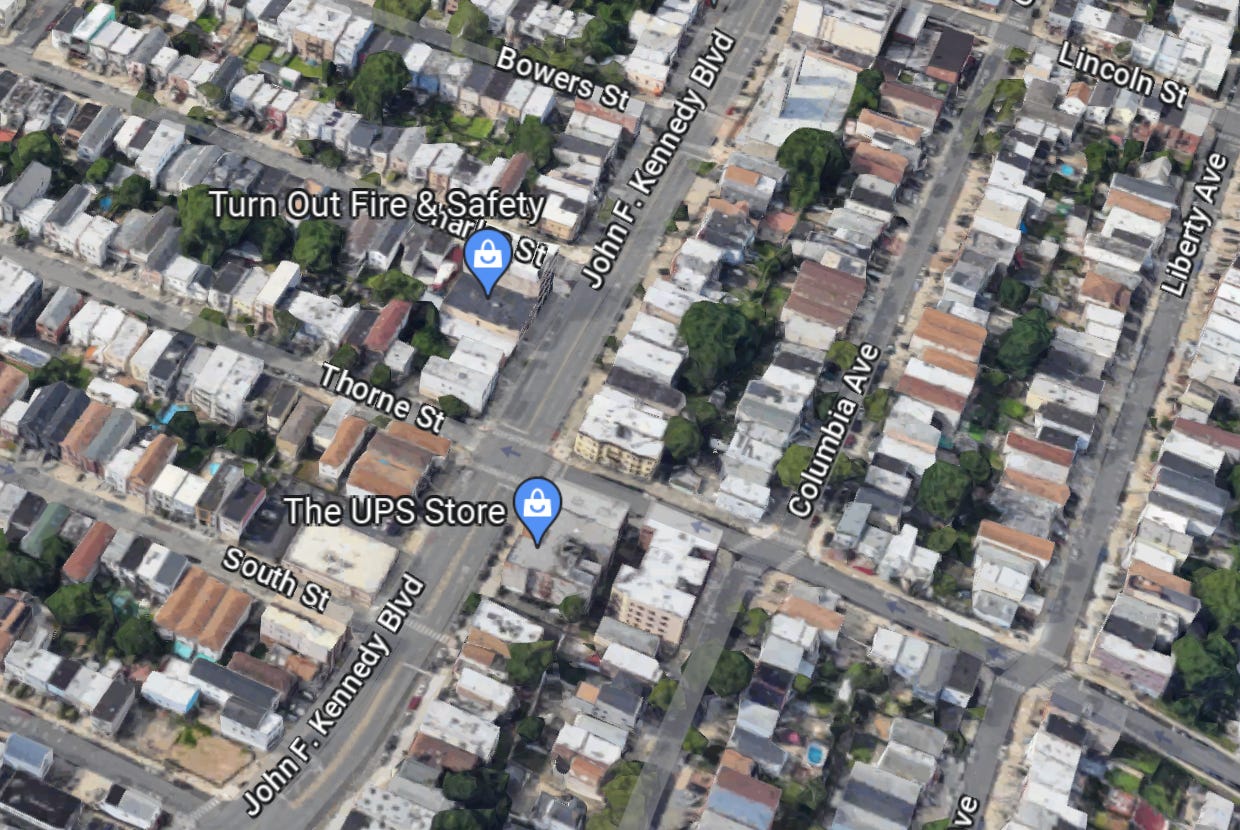This was a building in Jersey City, captured in 2020 on Google Maps:
And here, screenshotted from a tweet I saw, is what recently replaced it:
Here’s the text of the tweet, from a fellow who follows Jersey City development news: “Ramzi Sawaged, the owner of this auto repair shop, decided to build 10 apartments on top of his shop. The auto shop and bodega reopened on the bottom floor. One of several recent adaptive reuse projects on this stretch of Kennedy Blvd in the Heights, Jersey City.”
Unfortunately—for the purposes of this series, that is—this isn’t really adaptive reuse, because the old building was actually demolished. But I’m featuring it anyway because in essence it sort of is the same building: same owner, same businesses, and pains obviously taken to replicate the old form and design. The garage bays and store are in the same spot; the old-school corner cut-out for the store was even rebuilt; the overall look and feel blend right in. It even has a cornice!
Further down in the thread, the Jersey City guy notes that the zoning here does not, as written, permit this project; it was permitted via a variance, or a special exception for which builders must apply, and which is not supposed to be easy enough to get that it nullifies the ordinary zoning.
We can argue over putting up a building like this—a store and an auto garage with two floors of apartments above it—in a subdivision. But Jersey City isn’t exactly a subdivision community.
Here’s a snippet of the surrounding neighborhood:
The current zoning does not permit the imitation of the actually existing neighborhood that it governs.
The other point here is that, when it is possible to do so, many ordinary property owners—as opposed to large developers—will in fact building housing. Rather than massive projects that take years, they’ll do things like this: rebuild or expand small, classically urban buildings to better fit today’s needs. This isn’t political; it isn’t attached to an ideology. It’s simply the art of building and inhabiting cities.
When the owner of an auto shop can participate in that project, we’ve gotten something right. But when he needs the government to give him special, discretionary, one-time permission to do, we’ve gotten something very wrong.
Related Reading:
Have You Ever Lived in a Strip Mall?
Thank you for reading! Please consider upgrading to a paid subscription to help support this newsletter. You’ll get a weekly subscribers-only post, plus full access to the archive: over 700 posts and growing. And you’ll help ensure more material like this!







I like the new building and the increased opportunity for housing. I am concerned about the specifics of this building. Are their risks to living over an auto repair shop, say, risks of fire or exposure to chemical fumes or carbon monoxide?